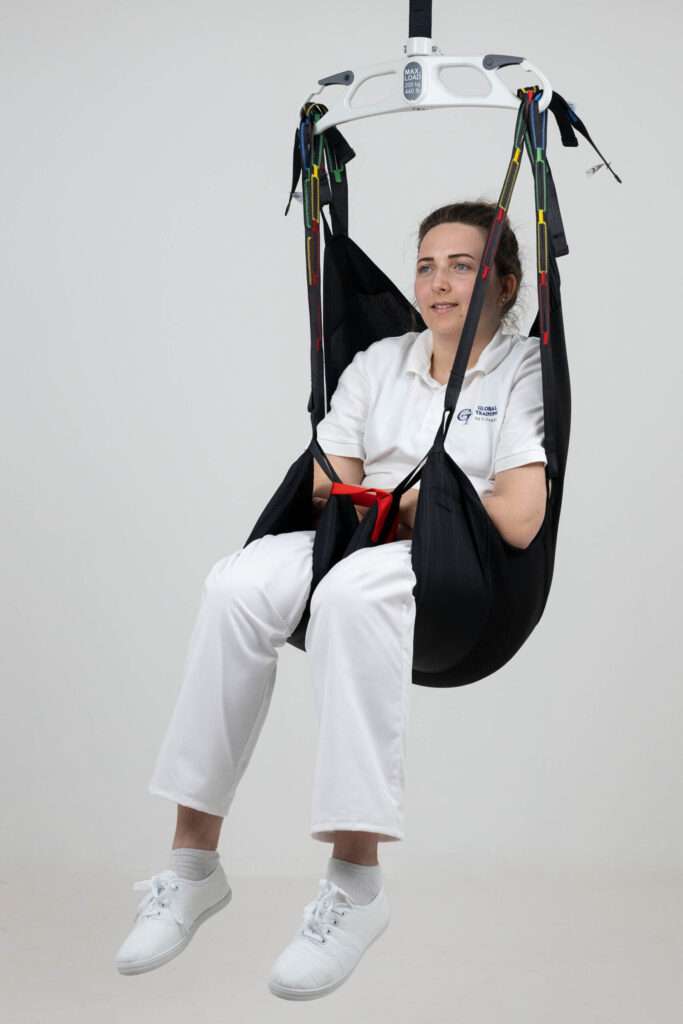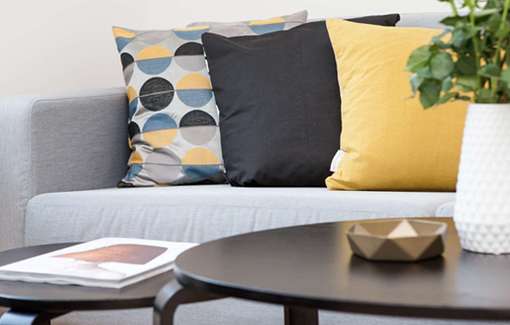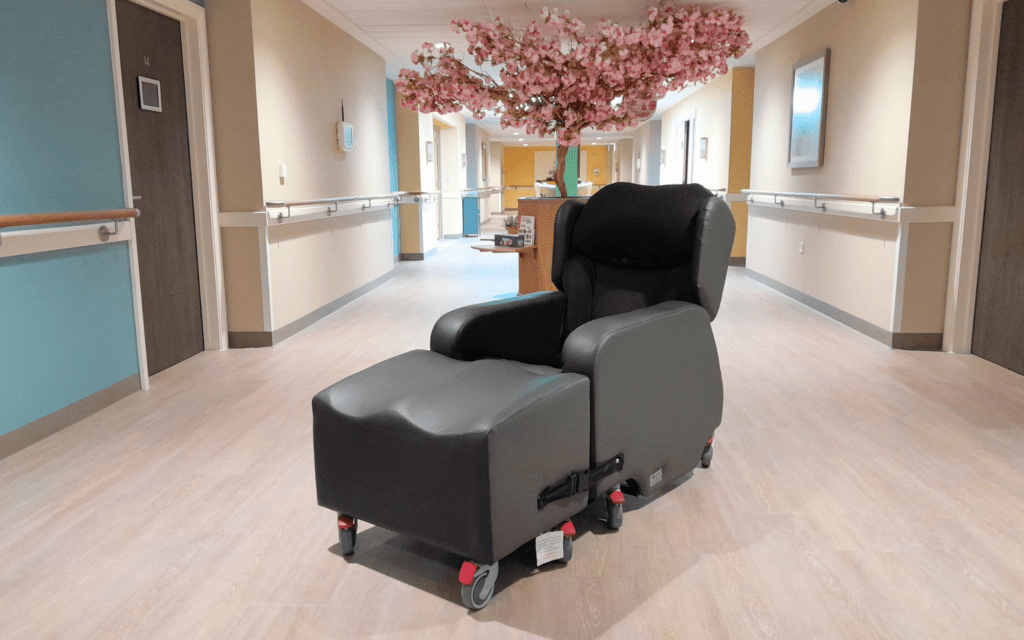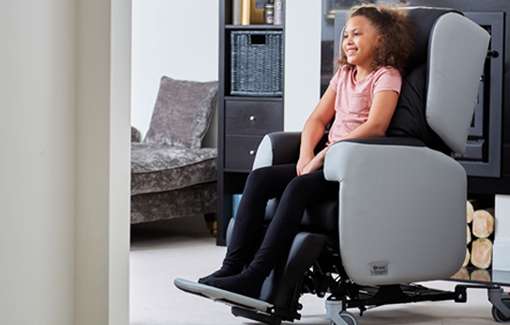Almost every healthcare professional we deal with will ask us about hoist slings. It’s one of our specialities, and we advise people day-in-day-out to work out which hoisting sling to use. There are a few things to consider when we look at specifying slings, let’s take a look at some of the criteria on our checklist.
Jump straight to…
1. Hoisting Sling Size
The size of the sling is particularly important, as it can affect the individual’s comfort and safety during transfers. If the hoisting sling is too small, then it could be tight in certain areas, and if the sling is too big, then the person could quite simply slide out of it.
We avoid problems like this by colour-coding our slings. We use different colours to make it easier for carers to immediately and easily know what size the sling is, right through from paediatric, to plus size. We tend to work out what size the client needs with this table:
| Sling Size | Chest | Height |
| XXX Small | 43cm — 53cm (17” — 21”) | 81cm — 97cm (31” — 38”) |
| XX Small | 53cm — 67cm (21” — 26”) | 97cm — 114cm (38” — 45”) |
| X Small | 67cm — 76cm (26” — 30”) | 114cm — 133cm (45” — 52”) |
| Small | 76cm — 87cm (30” — 34”) | 133cm — 146cm (52” — 63”) |
| Medium | 87cm — 97cm (34” — 38”) | 146cm — 160cm (58” — 63”) |
| Large | 97cm — 112cm (38” — 44”) | 160cm — 170cm (63” — 67”) |
| X Large | 112cm — 127cm (44” — 50”) | 170cm — 180cm (67” — 71”) |
| XX Large | 127cm — 142cm (50” — 56”) | 170cm — 216cm (67” — 85”) |
2. Style
The shape and type of the hoisting sling are also incredibly important. The user’s muscle tone, skin integrity, and the way the sling is being used should always be assessed when choosing a sling. Consider whether the sling is being used for toileting, bathing, or general transfers, and whether it’s to be left in position when not in use throughout the day.
Our Vivid Care slings are predominantly loop fixings, which fit most mobile and overhead hoists. However, some hoist manufacturers have stud or clip fixing hoists, which can only be used with stud or clip fixing slings. There’s a much more limited sling selection for clip fixing hoists, although we do stock a few options.
3. Material
Different sling materials have different benefits depending on the needs of the user:
- Poly: This is a standard, hard-wearing, heavy duty fabric used for slings.
- Mesh: This is better suited to slings that will be used for bathing, as it lets water pass through.
- Parasilk: This is a soft, silky fabric that is kind to the skin and can be used on in-situ slings. It is often used on leg sections to make it easier to slide the sling into place.
There’s also the option of including in-situ materials. These fabrics have a number of benefits:
- They contour to the body shape with two-way stretch
- They’re extremely comfortable
- It ventilates the body
- It reduces sweating and overheating
- They reduce slipping on the sling
- They can be used for bathing
Various sling linings are also available to cover the whole of the inside of the sling, or just the lower half of it:
- Towelling lining
- Quilted towelling lining
- Fleece lining (sheepskin style)
- Standard quilting (soft padded quilting)
- Dartex cover (fully wipeable soft lining)
- Poly cotton lining
4. Optional Extras
Slings also come with a number of optional extras that we consider when specifying as well. Here are a few of our most popular ones:
- Hip tapes: We recommend using these when the client has fragile hips, brittle bones, or low muscle tone. The tapes give extra support and adjustment to the hip area.
- Chest strap: This is a partially padded strap that gives extra support, and can be situated at waist height if needed.
- Coloured loops: Coloured loops are an easy way for the caregiver to identify the correct strap immediately.
- Head support: We offer arched head support, square roll don head support, or dress sling head support, which all boast different qualities.
- Removable bones: Not quite as strange as they sound, removable bones are extra supports that can be slid into the sling around the back area.
- Neck roll: A soft towelling neck roll for extra comfort and support to the neck area.
Although there are lots of options when it comes to slings, they’re not too difficult to navigate. Just remember these key features when looking at hoisting slings and you should be fine. If you’re still unsure or want some more advice, please get in touch with us. We can also make completely customised made-to-measure slings for individuals with specific needs.














